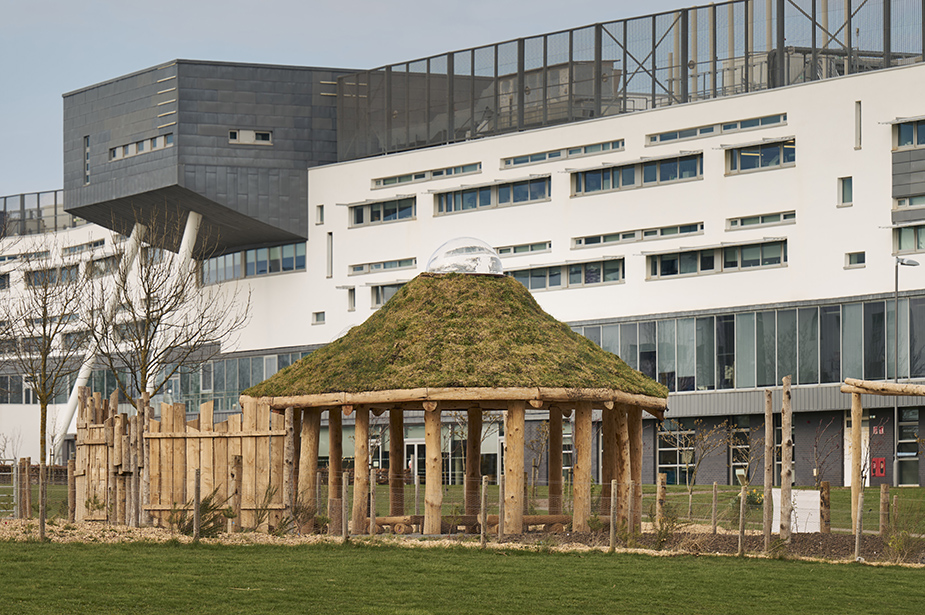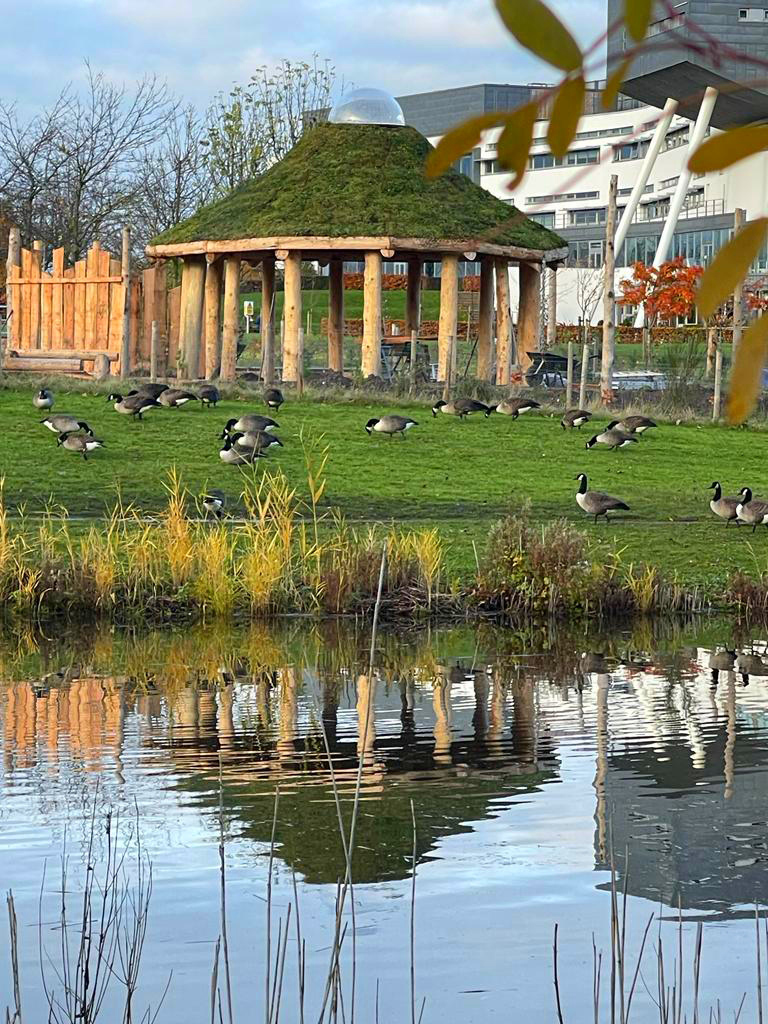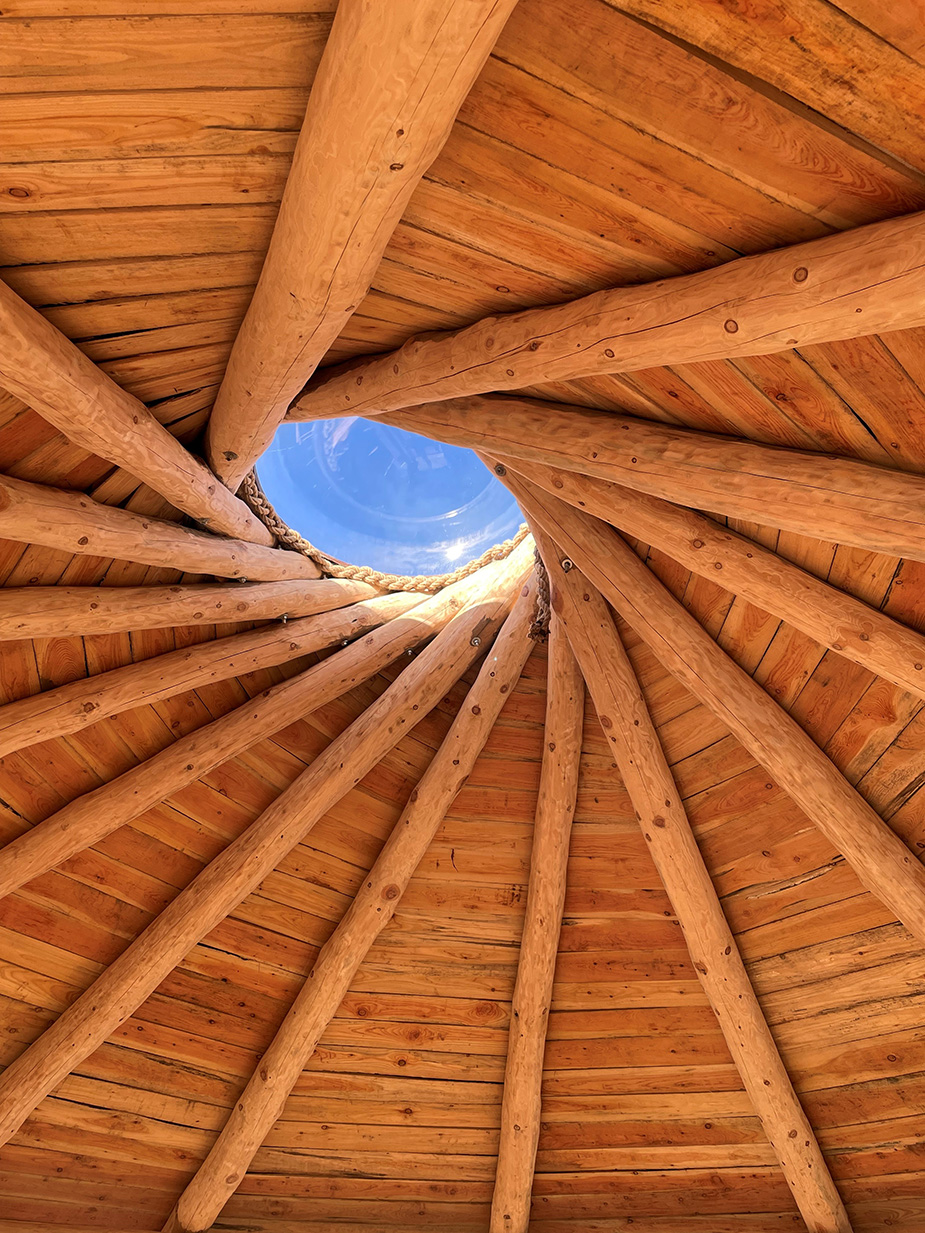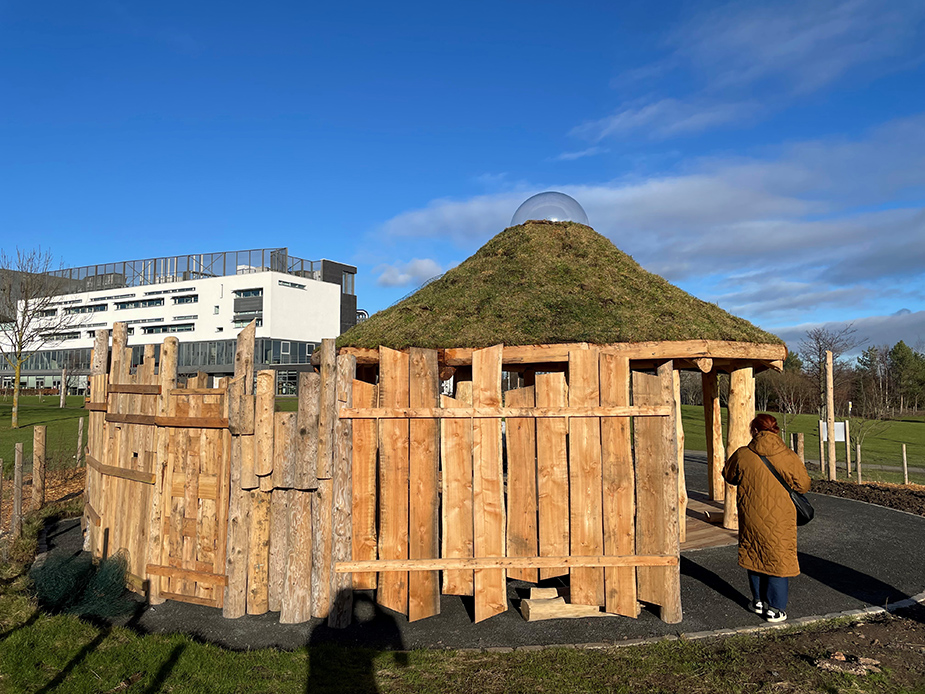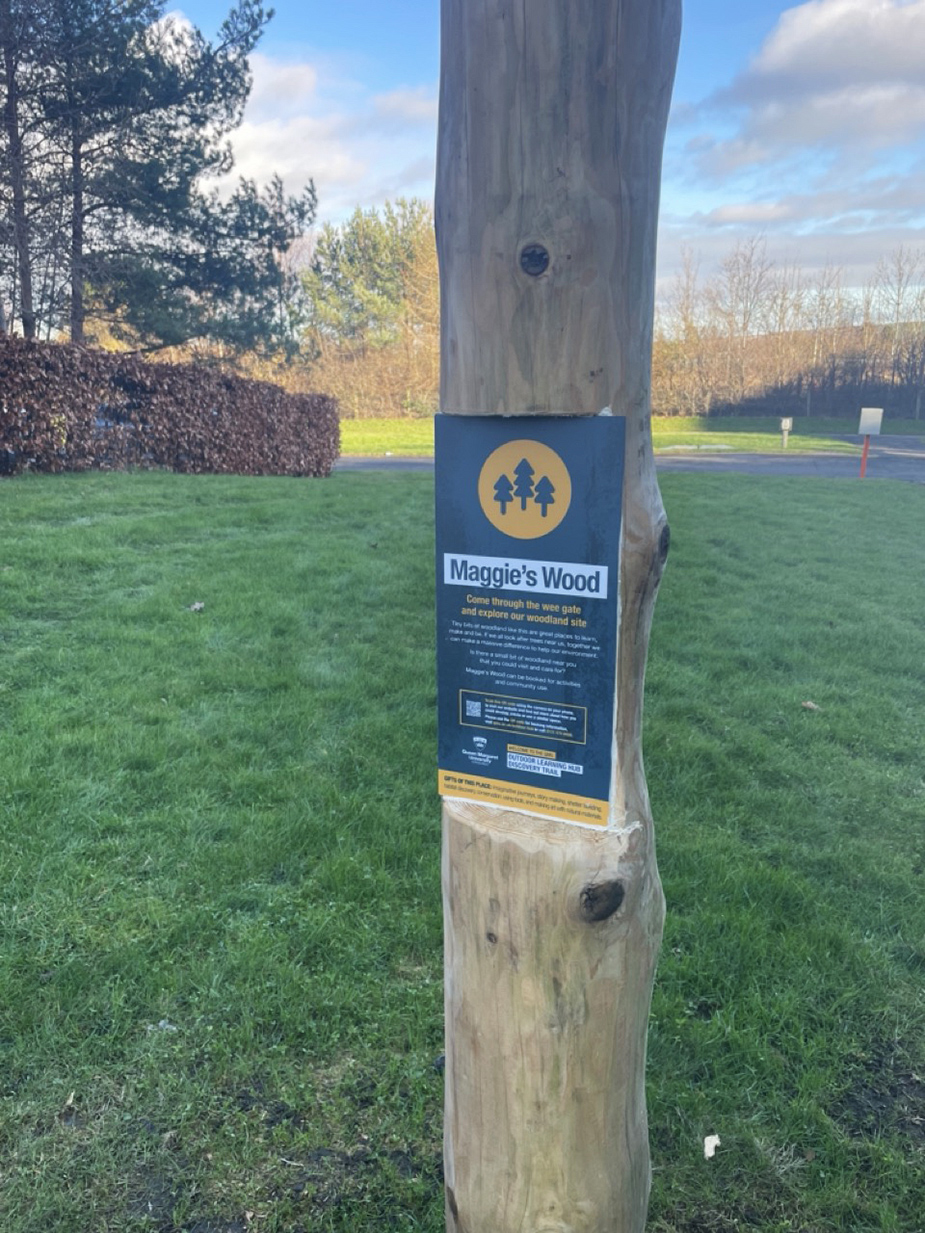Outdoor Learning Hub and Discovery Trail: a learning resource on a university campus
Learning from the classroom, to campus, to community
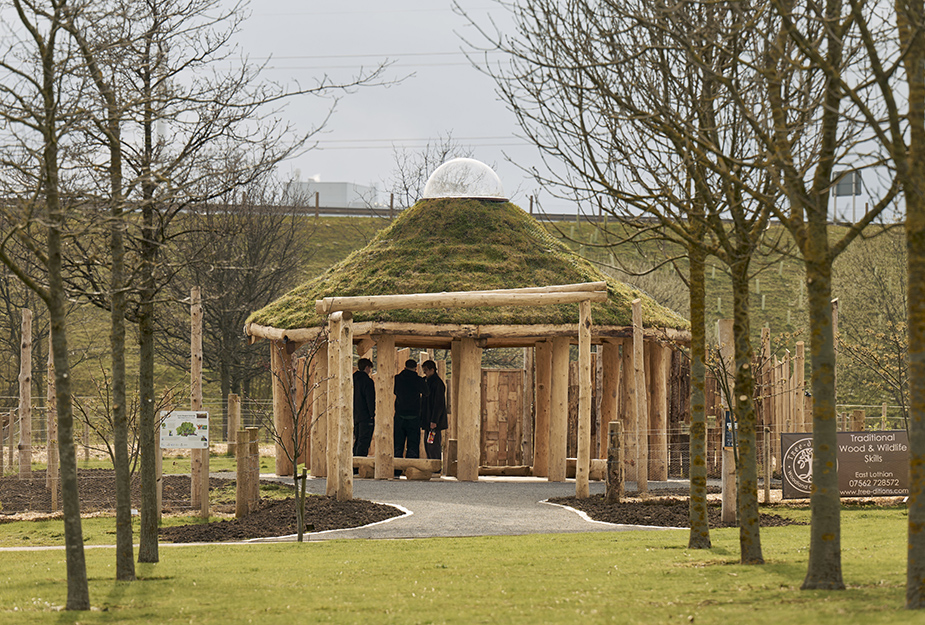
Introduction
Over the past few years, academics at Queen Margaret University (QMU) in Musselburgh have been actively engaging their Education students, including programmes in Primary Education, Education Studies, Postgraduate secondary education and professional micro-accreditations, in outdoor learning.
In 2020, we began a conversation with them about how to create a space on their campus to support this, and how they could best use their outdoor space as a way to encourage local and national engagement in outdoor learning practice.
The primary aim was to equip current and future teachers, and educators, with the knowledge and skills to confidently use outdoor spaces, and to ultimately enhance the learner journey of young people across Scotland. Beyond this, the wider aspirations were to enrich the student experience, connect with the community, and contribute to national and global concerns in education, sustainability, health and wellbeing.
Together we helped to create an award-winning outdoor learning hub and discovery trail on the campus at QMU. This case study looks at the story of the project, and how a design thinking approach opened up a range of opportunities and potential for how outdoor space can be used to engage, connect and enrich the experiences of students and wider community.
This project is a development of our work looking at Tests of Change, and explores how this design approach could be adapted for outdoor spaces. By considering the existing space and infrastructure at any school or learning setting, a wealth of educational resource can be unlocked.
Story of the project: a design-thinking approach
The initial idea for this project centred around the creation of a physical outdoor structure, for which we helped shape the brief and requirements. Through further exploration, and by challenging the initial brief, we pushed the boundaries to think about how the whole campus could be used for learning, and how the wider community could benefit.
By taking a design thinking approach and looking holistically at the space and possibilities, opportunities and collaborations emerged beyond the original scope.
Working with a range of partners, multiple different strands of the project emerged. The first was to develop the main outdoor structure (called the ‘Howff’), which could be used as a setting for aspects of the Education programmes, as well as by other faculties. The idea of a discovery trail then emerged as a way of connecting the 'Howff' with the wider campus.
Further elements included the creation of a 'Wee Forest', a NatureScot initiative, which engaged and connected with wider parts of the community, including local schools.
Stakeholder engagement sessions were held with staff and students on the campus, as well as local schools and community groups, to capture their ideas and vision for the space.
“The biggest shift was realising what we could do with the whole campus. Working with [Architecture and Design Scotland] also put flesh on the bones in terms of partnership working”
Key benefits from this project are:
Creating a centre for local and national engagement in outdoor learning practice, leadership and professional development; outdoor learning is now integral to the Education programmes at QMU. This will build confidence and knowledge amongst our current and future educators to use the outdoors differently and see space as a tool for learning. They will have experience of building, creating and using outdoor space in innovative ways.
Delivery of a master’s level short course in outdoor learning; QMU now offers a master’s level professional qualification, called ‘Making Places for Outdoor Learning’. This has been adapted into a 4th year core module for QMU’s Education Studies undergraduate degree. Our team at Architecture and Design Scotland take part in the delivery of this course.
A well-designed space that is versatile, and accessible to all; the space extends to the whole campus, and now other faculties and students across the university are seeing ways to apply their learning in the outdoors. From drama, to nursing, art therapy and much more, the opportunities are broad and varied.
Engagement with local primary schools; working with NatureScot, local pupils were given the opportunity to help plant trees to create the ‘Wee Forest’. This gave them the chance to learn about nature and biodiversity, as well as using outdoor spaces for storytelling sessions.
The campus is being used by local community groups as a place for activity, engagement, health and wellbeing; it is being used for events held by East Lothian Climate Action Green Futures, and as a venue for local play charity ‘Choose Play’, local Youth group ‘Recharge Tranent’, and a local Brownie group.
Providing a dedicated space to learn about the outdoors; as a result of the many wide-ranging partnerships involved in the project, the potential learning outcomes are varied and wide-ranging. From meeting the climate emergency and biodiversity targets, to green infrastructure, citizen science engagement, and enabling understanding of the wider health and well-being benefits of being in the outdoors, this hub and discovery trail offer much to learn from.
The project is being showcased at a number of events which celebrate its wide-reaching impacts; these include the Restoring Childhood Conference 2025, Scottish Outdoor Learning Research Network Picnic 2023, and National Network for Outdoor Learning Conference 2022.
There has been interest in the QMU campus as a venue from academic and professional groups that do not have a primary focus on the outdoors; including a network event for Scotland’s National Centre for Languages (SCILT) (2025), the International Professional Development Association symposium (2025), a Play Scotland/International Play Association network event (2024), and two Generation Working Together events (2022 and 2023).
Lessons can be applied across other schools and learning environments; each individual element of this project has the capacity to be transferable to any school environment, whether it is a small corner of a playground or a more ambitious masterplan. Click on ‘Discovery Trail’ tab to find out more about the suite of learning resources created to support outdoor learning.
What is the Outdoor Learning Hub and Discovery Trail?
From the creation of a physical outdoor space, to the development of curricular opportunities, and wider community outreach, the story of the Outdoor Learning Hub and Discovery Trail at QMU is as much about the intent and skills needed to use space differently as it is about the ultimate finished design.
The physical structure, called the Howff, provides a focal point, and a sheltered space for gathering, activities, learning and performance. The initial outline concept was designed by landscape architects, Wardell Armstrong, and the detailed design and construction was carried out by local artisan Dave Crosbie of Tree-ditions. It was built using local timber from trees felled during storms, to ensure a lower carbon footprint.
The Discovery Trail provides an accessible route through a variety of spaces on the campus, signposted by wooden waymarkers.
These include the following:

Hedgerow
A rich hedgerow, a wonderful habitat for plants, trees and animals. See further information here.

Wee Forest and Howff
A young forest planted in 2022 and a sheltered gathering space. See further information here.
Click on each link above to view learning videos which we commissioned to enhance the potential of the Hub as a learning resource, both for those undertaking QMU’s Outdoor Learning short course and those visiting the knowledge trail.
Click on the links for more information and videos.
Outcomes
The development of the outdoor learning hub and trail has had many positive benefits, as already outlined. A significant impact is that outdoor learning is now embedded into the curriculum at Queen Margaret University, in the Initial Teacher Education course. Students can also study a module specifically on outdoor learning, which we continue to support bi-annually.
It has become an award-winning, collaborative initiative between Queen Margaret University, Architecture and Design Scotland and NatureScot, having won the ‘Most Inspiring Learning Place’ at the Learning Places Scotland Awards 2024. It has also been ‘Highly Commended’ in the prestigious Green Gown Awards UK & Ireland 2025, under the category of ‘Benefitting Society’.
Furthermore, Queen Margaret University have already hosted two national conferences focused on outdoor learning and research.
At the heart of the success of this project was collaboration, and being open to exploring new ways of thinking. Below are quotes from Patrick Boxall, Senior Lecturer at QMU, who highlights a few of the ways in which collaborative design-thinking can enhance outcomes.
“Partnership working grounded in shared values is the most important thing. Having a shared common goal is really key”.
“It’s been a massive learning experience and the actual outcomes of the work have been really positive – much better than they would have been had we attempted to do it without Architecture and Design Scotland. [I had assumed] the focus would be on architecture, but we’ve talked about people all the time and I have been pleasantly surprised by this.”
Additional information
For more information about this project, you can read an earlier blog here.
Other related projects which may be of interest include:


Images from the Outdoor Learning Hub at QMU
Images credited to Malcolm Cochrane Photography, QMU, Architecture and Design Scotland and Alan J. Tait (graphic designer).
Project partners










